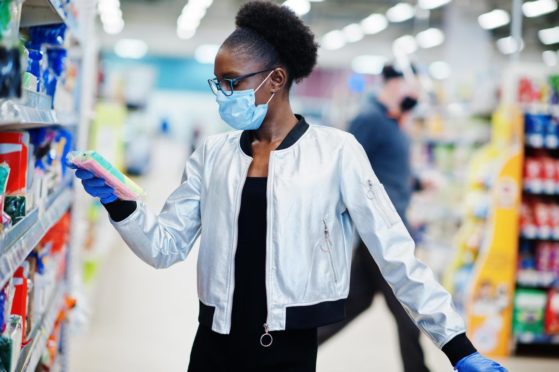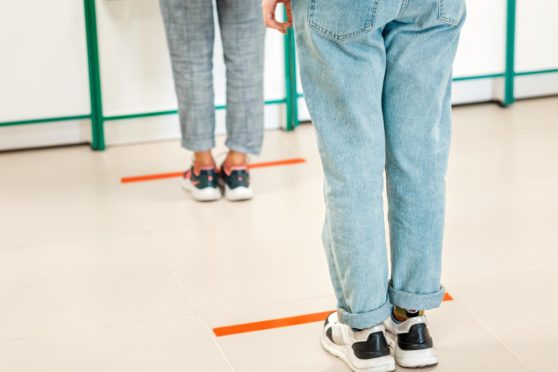The days of standing close to strangers in the supermarket queue; walking into a restaurant for a spontaneous meal out; going mask-less on a train. These feel like a distant memory after more than a year of rules designed to keep us safe from Covid-19.
Another blow was dealt to Scots yesterday as Nicola Sturgeon announced a further delay to the lifting of all Covid-19 restrictions, pushing back ‘Freedom Day’ again.
Though we know it’s for the health and safety of our communities, Freedom Day has come to symbolise a true return to the normal life we’ve missed and craved for so long.
- But when can we return to ‘normal’?
- Does it depend on the vaccine rate?
- How long will we need masks and social distancing?
We’re answering all your questions about life after Level 0.
What is Freedom Day?
Freedom Day is the name that has been given to the day when all coronavirus restrictions are finally lifted in Scotland.
Originally, Scotland was set to move into Level 0 on June 28 – meaning eight people from four households could meet indoors, social distancing in private homes is no longer necessary, and 200 could attend weddings and funerals.
Though a move to Level 0 marks a significant departure from the restrictions we have lived with since March 2020, it is still not a complete shift to normalcy.
In Level 0, the advice remains that you should work from home where possible and nightclubs are still not permitted to open.
It’s also important to note that since March 2020, no part of mainland Scotland has been in Level 0. Therefore it is hard to say how this will work in practice and whether adjustments will be needed when the time comes.
When is Freedom Day?
The further easing of coronavirus restrictions was delayed by Nicola Sturgeon on June 22, postponed until at least July 19.
But with the situation constantly changing, there is every chance that the move to Level 0 may need to be pushed back again, or even brought forward.
The hope is that mainland Scotland will move into Level 0 on July 19, with a further easing of restrictions occurring three weeks later on August 9.
If everything goes to plan, all remaining legal restrictions are expected to be lifted on this date.
Though there is no definite date, and the timeline may be brought forward or pushed back depending on the case numbers, things are looking much brighter than they did six months ago.
So, how do we get to Freedom Day?
Freedom Day may feel far away at the moment, but rest assured we are heading in the right direction.
The vaccine rollout will play a part in the easing of restrictions.
Last month the average age of people testing positive with Covid-19 was 29, pointing to a sign the vaccine programme is working and protecting those in older age groups.
If this success continues and the majority of the population receives the vaccine, this will likely be good news for the easing of restrictions.
Though positive cases of Covid-19 have been increasing since the beginning of May, the number of deaths has remained relatively stable since mid-April.
Again, this suggests the vaccine programme is reducing the number of deaths.
During a statement to parliament on June 22, Nicola Sturgeon said: “Up until now, the Scottish Government’s strategic intention has been to ‘suppress the virus to the lowest possible level and keep it there’.
“From now, our aim will be to ‘suppress the virus to a level consistent with alleviating its harms while we recover and rebuild for a better future’.”
When can I stop wearing a mask?
It is likely we will have to continue wearing masks ahead of what some are describing as a potential resurgence in case numbers in the late summer and autumn.
Speaking on June 22 Nicola Sturgeon said: “At least for a period, we are likely to require the continued wearing of face coverings in certain settings, for example shops and public transport.”
It is possible that mask-wearing will become a part of normal life as we emerge from the pandemic.
 Cases of common cold, flu, and other respiratory diseases were lower in the autumn than average for the time of year, as a result of social distancing, mask wearing and improved hygiene such as hand washing.
Cases of common cold, flu, and other respiratory diseases were lower in the autumn than average for the time of year, as a result of social distancing, mask wearing and improved hygiene such as hand washing.
It is likely many will wish to continue wearing face coverings in public spaces even after the legal requirement to do so has lifted.
Similarly, many others will be keen to ditch them as soon as possible.
When can I stop social distancing?
On June 22, the Scottish Government published its Review of Physical Distancing in Scotland report, setting out the future and phasing out of social distancing in “a gradual and cautious way”.
The report states that – subject to change depending on circumstances – advice as of July 19 will be outdoor physical distancing can cease, with a one metre rule for indoor spaces.
All being well, physical distance will be able to stop completely as of August 9.
This will be conditional on over 40s being fully vaccinated and a review will take place ahead of this date.

However, this does not mean an immediate return to the office.
During her update on June 22, Nicola Sturgeon advised a phased return, with employers encouraged to make homeworking more possible for employees than before the pandemic.
Even if the legal requirement to physically distance is lifted on August 9, the Scottish Government may still advise to maintain distance from others, especially with those who are not fully vaccinated.
As we continue through the coronavirus pandemic there is much uncertainty and dates could still change.
But it is heartening to know normality may be closer than we think.
